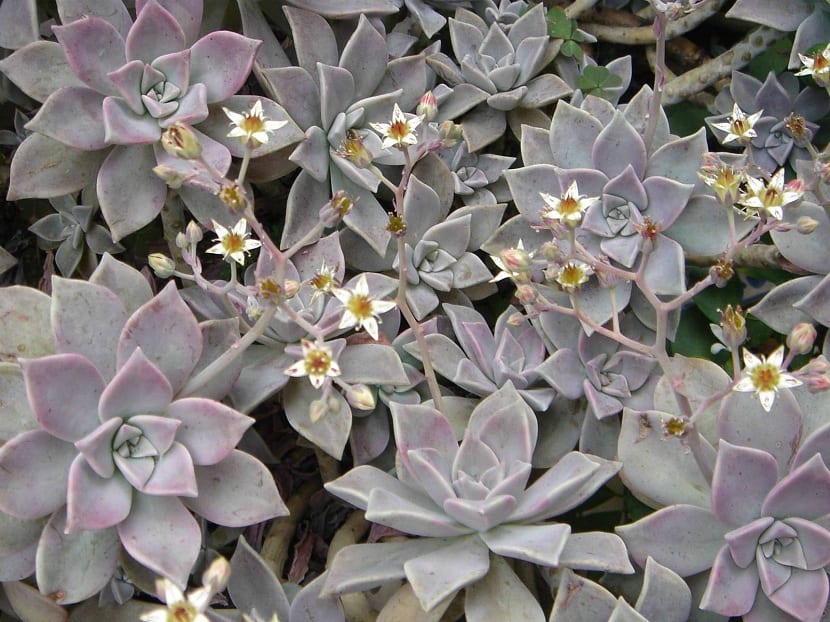
Today we have to talk about a very useful plant in the ornamentation of parks and gardens and that belongs to the group of succulents. It's about the pearl. It is also known by other names such as ghost plant or graptopétalo. Its scientific name is Paraguayan Graptopetalum and belongs to the Crassulaceae family and the Graptopetalum genus. It is a very popularly known plant used for decoration in parks and gardens.
Here we are going to teach you all the main characteristics of the plant, how to take care of them, what diseases it can have and how to reproduce them. Do not miss it!
Key features
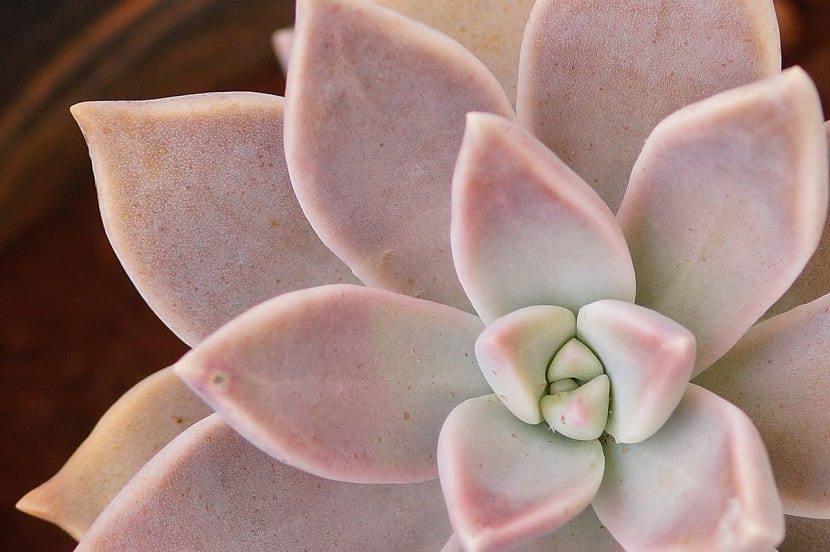
Almost all plants of this genus have spots that they have on the flower petals. This plant is so well known for its beauty and exotic touch in decoration and because does not require much care. They are also quite easy to grow and reproduce, making maintenance tasks easier.
It is a plant native to Mexico and it has been traded in many areas around the world, mainly the tropics. The leaves of this plant are arranged in a rosette, like most succulents. They are finished in a point and where you can see pink regions. They are covered with a kind of protective layer that serves so that they do not burn when they are exposed to direct sun.
Its growth is intermediate. It is capable of reaching about 20 cm and depends entirely on the level of illumination to which it is exposed. The more sun it has throughout the day, the more it can grow fully. The flowers are smaller and are usually white with a light red center. They have a star shape and develop in the upper part of the plant. It is as if it has some kind of flower stem. The flowering season begins in February or May, depending on the temperatures. If they are generally taller, we can see the flowers sooner.
Mother of pearl care
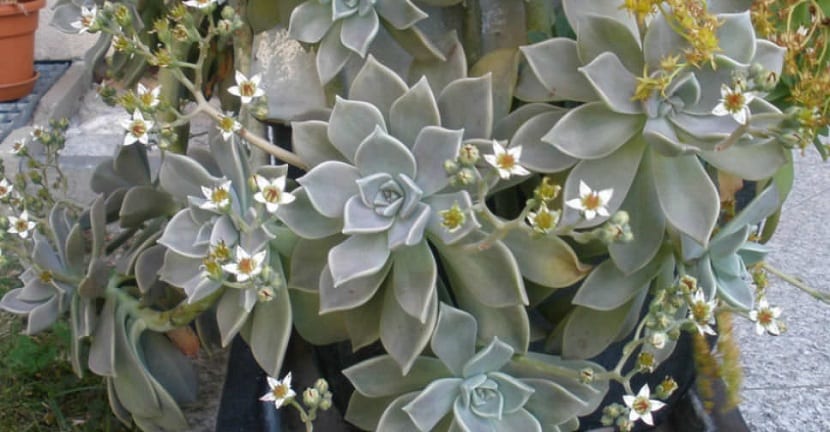
This plant is perfect to use it in rockeries and to combine them with other succulents. The most used in these cases is the place them in pots and put them on balconies and terraces. They not only serve to decorate these places, but they are strategic sites to further facilitate their care. If your balcony or terrace is generally facing the sun, It is the ideal place to place the graptopétalo.
And it is that this plant requires full exposure to the sun to be able to grow completely. Although they can support something in semi-shade, the ideal is that it is in full sun if we want it to develop fully. Although it has to be in the sun, it does not support excessively high or low temperatures either. The optimal range of temperatures is usually between 15 and 25 degrees. They do not support frost well. For the colder season it is better not to give them anything as a gift, so that they can bear it better.
Thanks to its great rusticity, it is able to thrive in any type of soil. He is not at all demanding with it. When we plant it in a pot, we must wait for the roots to come out below it to be able to transplant it. If we do it before, the period of adaptation to her new environment may be more difficult for her and she may not survive well.
Regarding irrigation, you have to water moderately throughout the year, although in the cold season of winter it is better not to water it. Rainy days are more than enough to keep them well. To help them develop well with high temperatures and during the flowering season, it is convenient to fertilize it every 20 days with a mineral fertilizer in spring and summer.
Considerations and pests
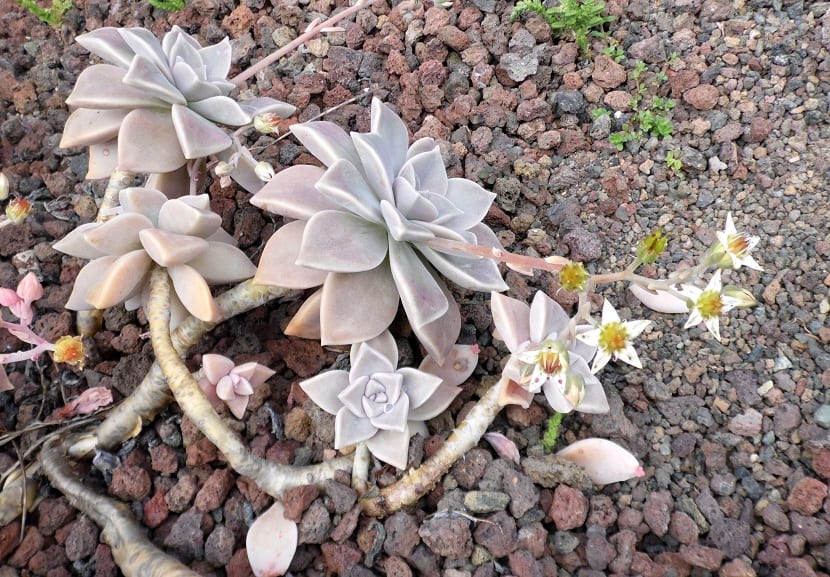
As we have said before, if the summer sun causes temperatures to rise above the optimal range, it is best to avoid direct exposure. Although this plant has a layer that protects them from the harmful rays of the sun, it is likely that excessive increase in temperature will weaken the layer. Better to guarantee their survival and put them in semi-shade on the hottest days of direct sun.
As for the pot, it is better to be large so that it has more room for growth and does not have to be transplanted too quickly. It is better to let it adapt little by little so that it can develop properly. The substrate must be well aerated so as not to accumulate too much moisture when it has been watered. If we water excessively, we will be causing their rot, since it does not tolerate large amounts of water. In summer it is enough to water it once or twice a week at most. If it's too cold on some winter nights, remember to tuck it inside to hold.
When we water, we must be very careful not to wet the leaves, because they can be seriously damaged.
As for the pests to which they are most prone are the mealybugs. Normally they usually appear if there is an excess of watering or humidity. For this reason, we have emphasized the need to water the mother of pearl little. If you see that you have mealybugs, it is best to use a little alcohol to kill them.
Multiplication
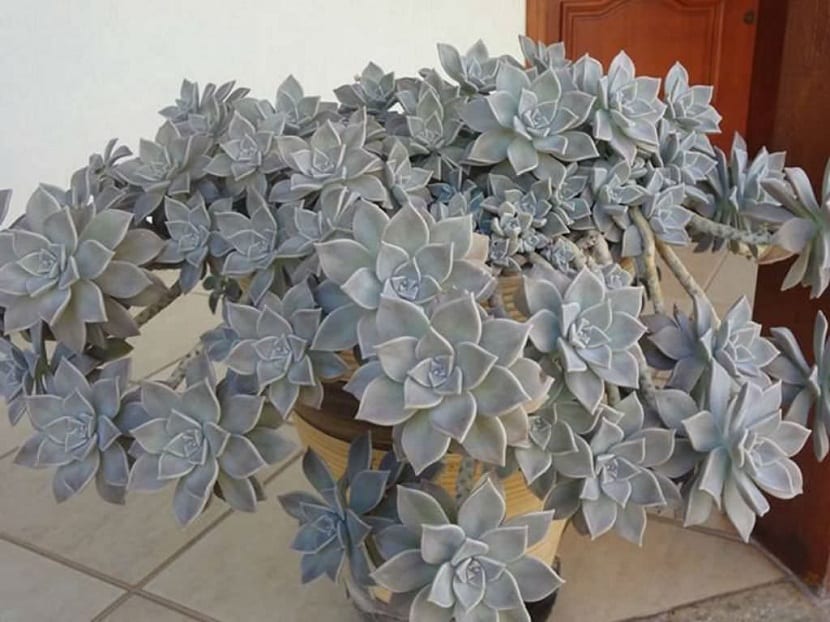
Multiplying this plant is very easy. As its leaves fall, you just have to save them and grow them later. Just by burying the leaves a little, you will eventually be able to have a new plant identical to the old one. This is the reason why this plant is so easy to spread. The leaves can also serve as stems to make cuttings and grow new succulents.
Although we have mentioned before that the ideal is to have them in pots, you can also grow them directly in the soil of your garden and having to avoid transplantation when they get too big. It is already having your own criteria of how you want to decorate your home with this succulent and what is best for you for its care. If you plant it directly on the ground, it is more difficult to protect it if the climate in your area is somewhat colder and there are night frosts in winter.
I hope that with these tips you can enjoy your mother of pearl.